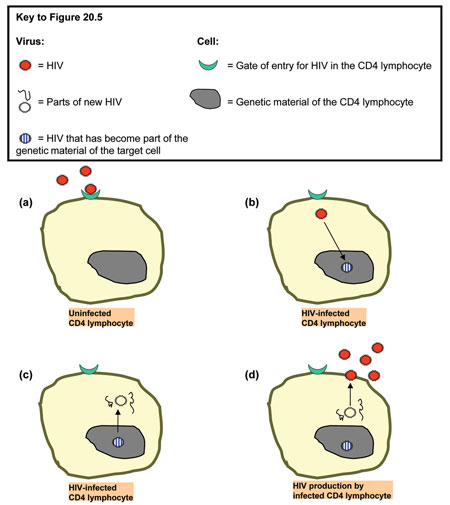20.3.1 HIV infects the CD4 lymphocytes
Like all viruses, HIV has to enter (i.e. infect) healthy cells in the body in order to produce more copies of itself. These newly-produced viruses are then released into the blood in order to infect other susceptible cells. You may think of an HIV-infected cell as a sort of HIV factory. However, not all cells in the human body can be infected by HIV. Its main targets are the CD4 lymphocytes. Figure 20.5 shows in more detail the mechanism of infection of a CD4 lymphocyte by HIV.

Figure 20.5 the life cycle of HIV. (a) HIV binds to proteins located on the surface of the target cell, in this case a CD4 lymphocyte. (b) HIV enters the cell, changes its structure and becomes part of the genetic material of the infected cell. (c) Many copies of HIV’s genetic material are produced inside the cell, together with viral proteins necessary to construct more viruses. (d) HIV’s genetic material and proteins assemble at the surface of the cell, and millions of new viruses are released outside the cell, where they can infect other CD4 lymphocytes. (Diagram adapted by: Drs Aschalew Endale and Ignacio Romero, from Participants Manual, WHO/IMAI, Integrated Management of Adolescent and Adult Illness, Basic Clinical HIV Care, ART and Prevention Training Course, 2007)

